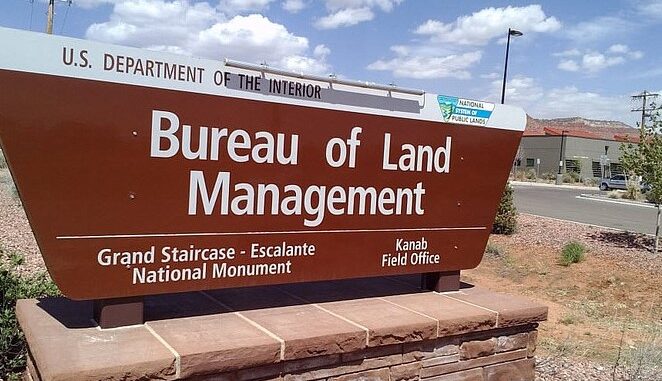
Energy News Beat Publishers Note: With a joyous scream 2020 is behind us and we are looking forward to 2021. I however am going on the record as saying “2021 will look at 2020 and say, hold my beer”. This is going to be even a more interesting year.
As the new year dawns, the U.S. oil and gas industry is relieved to be leaving 2020 in its rear view mirror. The new year of 2021 will surely treat the industry better than 2020 did, won’t it? Or will 2021 turn to 2020 and say “hold my beer” where oil and gas is concerned?
It’s a great question, and the truth is that no one knows the answer right now. Still, it’s time to roll out annual predictions for the year, and all a guy can do is take his best shot.
The overriding factor that makes this endeavor more difficult than it normally is has to do with the lack of any real knowledge about the direction the COVID-19 pandemic will take and how the U.S. and foreign governments will respond to it. For example, what if Joe Biden decides to invoke the 100-day national lockdown order he has been publicly discussing for the past few months once he is installed in office? If he should take that action and other nations follow suit, the outlook for global demand for crude oil would be significantly depressed for the first half of the year. That in turn would significantly lower the outlook for crude prices.
Prices and rig counts. – The COVID-related uncertainty makes trying to project prices and rig counts across a full 12-month period even more of a crap shoot for 2021 than it normally has been. Given that reality, I’ll simply predict that the domestic rig count, which has gradually risen since early September, will continue to rise throughout the first quarter of the year. That seems like a safe bet given the manner by which the majors and large independents set their capital budgets. I’ll have to revisit that outlook come April, as those big upstream companies start to adjust those budgets for the second half of the year.
As for prices, it seem safe to bet that the price for a barrel of West Texas Intermediate, also on the rise since September, will cross the $50 mark at some point in January. But prospects for any further increases will depend entirely on COVID-related developments and the Biden regulatory agenda. Natural gas prices, meanwhile, will just continue to move up and down in a very narrow trading range as the commodity remains over-supplied in the U.S.
Expect a regulatory onslaught. – Here’s the safest bet of 2021: The regulatory compliance and government relations departments at oil and gas companies will be a real growth area throughout 2021, as the Biden/Harris administration quickly embarks on re-regulating an industry that was somewhat de-regulated at the federal level by the Trump administration.
Such new regulatory efforts will include:
• Biden’s promised fracking ban on federal lands. – Either Biden or his eventual Interior Secretary will most likely issue an executive order on this subject, but that would lead to underlying regulatory efforts to facilitate Interior’s execution of the order.
• An effort to re-visit the expansive Waters of the United States effort by the Environmental Protection Agency (EPA). – As drafted and almost finalized by Obama/Biden, this rule would have seen EPA regulators overseeing vast swaths of the U.S. economy. It was discarded by the Trump EPA and replaced with a far less expansive rule. Expect a new effort to expand EPA authority in this area in the coming four years;
• The Bureau of Land Management (BLM) rule on flaring. – This was another effort that was almost finalized by the Obama/Biden administration. Expect it or something even more onerous to be brought back up in 2021;
• BLM/EPA regulations on methane emissions. – Despite dramatic industry progress to voluntarily curb its own emissions in the 21st century, the Obama/Biden EPA had a laser focus on trying to implement command-and-control regulations in this area during its final two years. Expect this laser focus to be renewed starting on January 21;
• New BLM regulations on Hydraulic Fracturing. – Any Biden/Harris executive order banning fracking on federal lands will need to be backed up with regulations or face recission by the next Republican president in a few years.
Pipelines, Ports and Exports – Expect the Federal Energy Regulatory Commission (FERC) to once again work to inhibit growth in the midstream sector considerably by slowing and obstructing the development and completion of major new interstate pipeline projects.
The states play a role here as well. – Democratic governors like Andrew Cuomo have had great success in obstructing new pipeline projects from crossing through their states; obviously, a reconstituted FERC would possess far greater power to obstruct the installation of critical new infrastructure. Over the past year, the midstream industry has also seen activist federal judges issue a series of unprecedented decisions designed to halt major pipeline infrastructure projects like the Dakota Access Pipeline and the northern leg of the Keystone XL.
The roles of multiple federal agencies. – Finally, we should remember the key roles various federal agencies play in the permitting and authorization of major industry-related facilities, such as LNG export facilities, refineries and the expansions and improvements of shipping ports. Agencies involved in these areas include the EPA, the Department of Commerce, the Department of the Interior, and the U.S. Army Corps of Engineers, to name a few.
The Georgia runoff elections are key. – The two senate runoff elections in Georgia become a key factor in this area. Should the Democrats manage to win both of those seats, they would then control razor-thin majorities in both houses of congress. That level of control would enable them to hold up needed deepening and widening of various U.S. ports simply by holding up funding for the Corps of Engineers, which manages all such projects across the nation.
Crude oil production in the U.S. will fall and imports will rise. – All of these actions and many more – like the expected raft of Biden executive order designed to reverse an array of pro-oil and gas executive orders issued by President Donald Trump – will have the impact of depressing growth in the domestic oil and gas business. This in turn will decrease the country’s new-found energy security and result in steadily-rising crude oil imports. This is not complicated and very easy to predict; thus, it must be assumed that it is in fact the Biden/Harris goal.
LNG exports will continue to rise, at least through the first quarter. – While natural gas remains an under-utilized resource here in the U.S., global demand for it continued to grow throughout 2020, and the U.S. LNG industry set new records for export volumes during the 4th quarter of the year. That trend will continue through at least Q1 2021, after which everything will depend entirely on the direction of the COVID pandemic and government policies related to it.
What this all spells for the domestic oil and gas industry is another year in which uncertainty and inability to plan the business will be the overriding themes. The good news is that if the worst of the COVID pandemic is over by the end of the first quarter, then 2021 could turn out to be a very strong year for the industry despite the coming federal regulatory onslaught. But the bad news is that, as we sit here today, there is no way to have any level of confidence that that will be the case.
Source: Forbes



